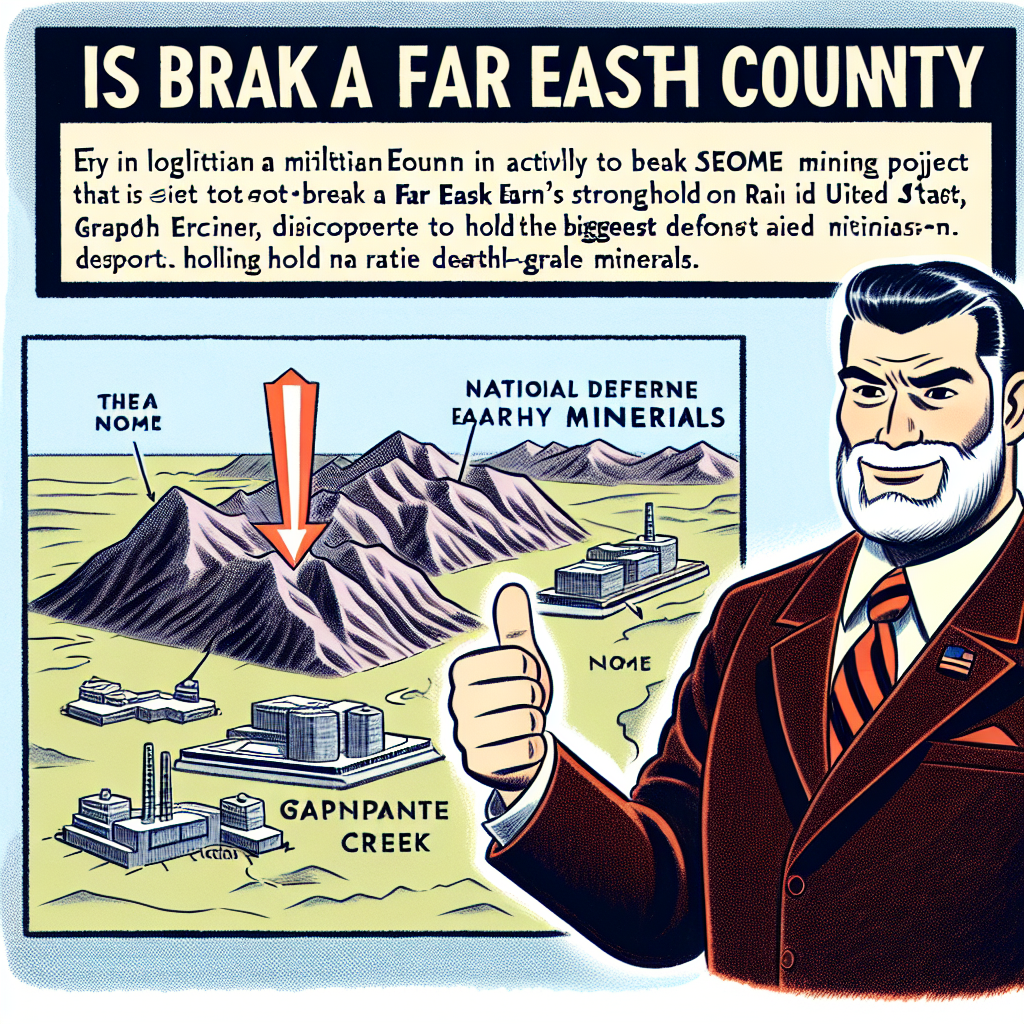The Alaska Governor Mike Dunleavy has been vigorously promoting the Graphite One mining project, which is poised to break China’s monopoly on rare earth minerals. Located near Nome, Alaska, the largest graphite creek deposit in the United States was found to contain national defense-grade rare earth materials, including neodymium.
Graphite One, an American graphite company, announced on November 13 that rare earth elements have been discovered in its Graphite Creek deposit located north of Nome. Nome is about 160 kilometers south of the Arctic Circle and falls within the “Near-Arctic” region.
“The discovery of both graphite and rare earth elements on the same deposit underlines Graphite Creek’s status as a truly generational deposit,” said Anthony Houston, the company’s president, in a press release.
According to data from the International Energy Agency, as of 2024, the United States was at least 93% dependent on imports of rare earth elements and graphite itself. The U.S. Geological Survey has identified Graphite Creek as the largest known natural graphite deposit in the United States.
Batteries, renewable energy technologies, fiber optics, lighting equipment, magnets, as well as consumer electronics like cell phones and tablets, all rely on rare earth elements. China has dominated global production of magnetic rare earths and graphite, implementing export restrictions last year and further weaponizing rare earths during the 2025 U.S.-China trade war, prompting Western countries, including the United States, to focus on rebuilding rare earth mineral supply chains.
According to a Fox News report on November 18, a source revealed the discovery of rare earth elements outside of the graphite deposit, indicating progress in countering China through President Trump’s “Energy Dominance Agenda”.
Houston stated, “Given the robust economic benefits of our planned complete graphite material supply chain, the presence of rare earth elements in the Graphite Creek deposit indicates that maximizing value through their recovery as by-products of graphite production is feasible.”
Geochemical analysis of drill core samples showed high levels of heavy rare earth elements and all five major permanent rare earth elements (neodymium, praseodymium, dysprosium, terbium, and samarium).
Graphite One is advancing a U.S.-based graphite supply chain from transportation of graphite from Nome to an advanced graphite and battery materials plant in Warren, Ohio, which also features complementary recycling facilities for graphite and other materials.
Earlier this year, Governor Dunleavy praised the Graphite One project as the largest of its kind in North America in his state of the state address, encouraging the project to progress with support from the state and federal governments.
Houston remarked that Dunleavy correctly recognizes Alaska as an important source of metals and mineral resources for the United States, and is “changing the 21st century,” reducing U.S. reliance on foreign resources, including those from “Entities of Concern.”
In a press release, the company stated that its Graphite Creek feasibility study, supported by a $37.5 million appropriation under Chapter 3 of the Defense Production Act, was completed over 12 months ahead of schedule. In September 2025, Graphite One received a non-binding letter of intent for the $570 million Graphite Creek project from the U.S. Export-Import Bank, following a $325 million intent letter for the company’s advanced graphite materials plant development project in Ohio. The company is engaged in ongoing discussions with senior officials from all relevant federal departments and agencies on the strategy for the complete supply chain of the company’s advanced graphite products.
Fox News reported that in addition to Alaska, rare earth elements were also found in Pennsylvania. In the anthracite coal deposits of the Appalachian Mountains in Pennsylvania, up to 17 different rare earth elements were discovered, posing another potential blow to China’s rare earth monopoly.
Former Pennsylvania Republican Congressman Lou Barletta attempted to raise awareness about these rare earth elements during his congressional tenure in the 2010s. In an interview with Fox News in 2018, Barletta mentioned a pilot project funded to study the extraction of rare earth elements from coal wastewater. From Shamokin to Audenried, there are many long-abandoned coal mines.
Although Pennsylvania’s progress in mining such minerals has been limited compared to Alaska’s efforts, researchers at Pennsylvania State University announced in September that they have developed a method to recover cobalt, manganese, and nickel from acidic mine drainage and coal ash.

